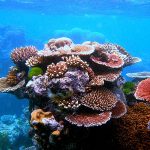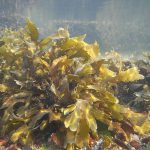What is it?
- Seagrasses are flowering plants that grow submerged in shallow marine waters like bays and lagoons.
- They are so-named because most species have long green, grass-like leaves.
- Seagrasses have roots, stems, and leaves and produce flowers and seeds.
- Like terrestrial plants, seagrass also photosynthesizes and manufactures their own food and releases oxygen.
- They evolved around 100 million years ago, and there are approximately 72 different seagrass species that belong to four major groups.
- Some of the important seagrasses are Sea Cow Grass (Cymodocea serrulata), Thready Seagrass (Cymodocea rotundata), Needle Seagrass (Syringodium isoetifolium), Flat-tipped Seagrass (Halodule uninervis), Spoon Seagrass (Halophila ovalis) and Ribbon Grass (Enhalus acoroides).
Distribution of Seagrasses
- In the World
- They are found on all continents except Antarctica.
- The tropical waters of the Indo-Pacific hold the highest diversity of seagrasses in the world.
- In India
- They occur all along the coastal areas of India.
- They are abundant in the Palk Strait and Gulf of Mannarin Tamil Nadu.
Ecosystem Services
- They are considered to be ‘Ecosystem Engineers’.
- Seagrasses help maintain water quality. They trap fine sediments and suspended particles in the water column and increase water clarity.
- The extensive vertical and horizontal root systems of seagrasses stabilise the sea bottom.
- They are one of the most productive ecosystems in the world.


